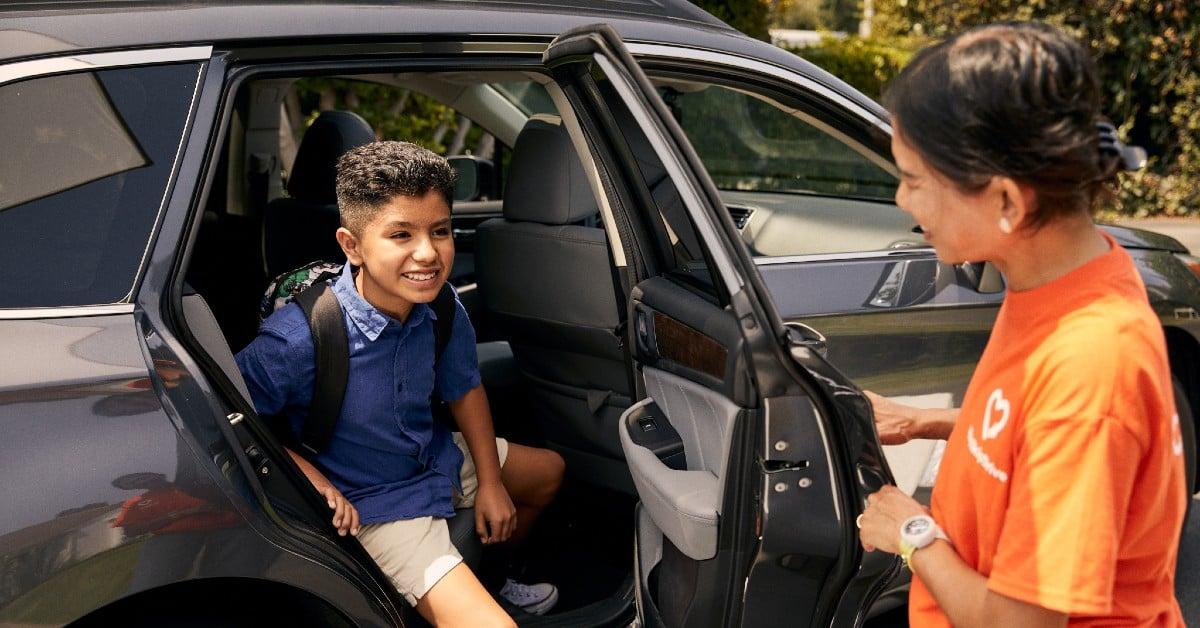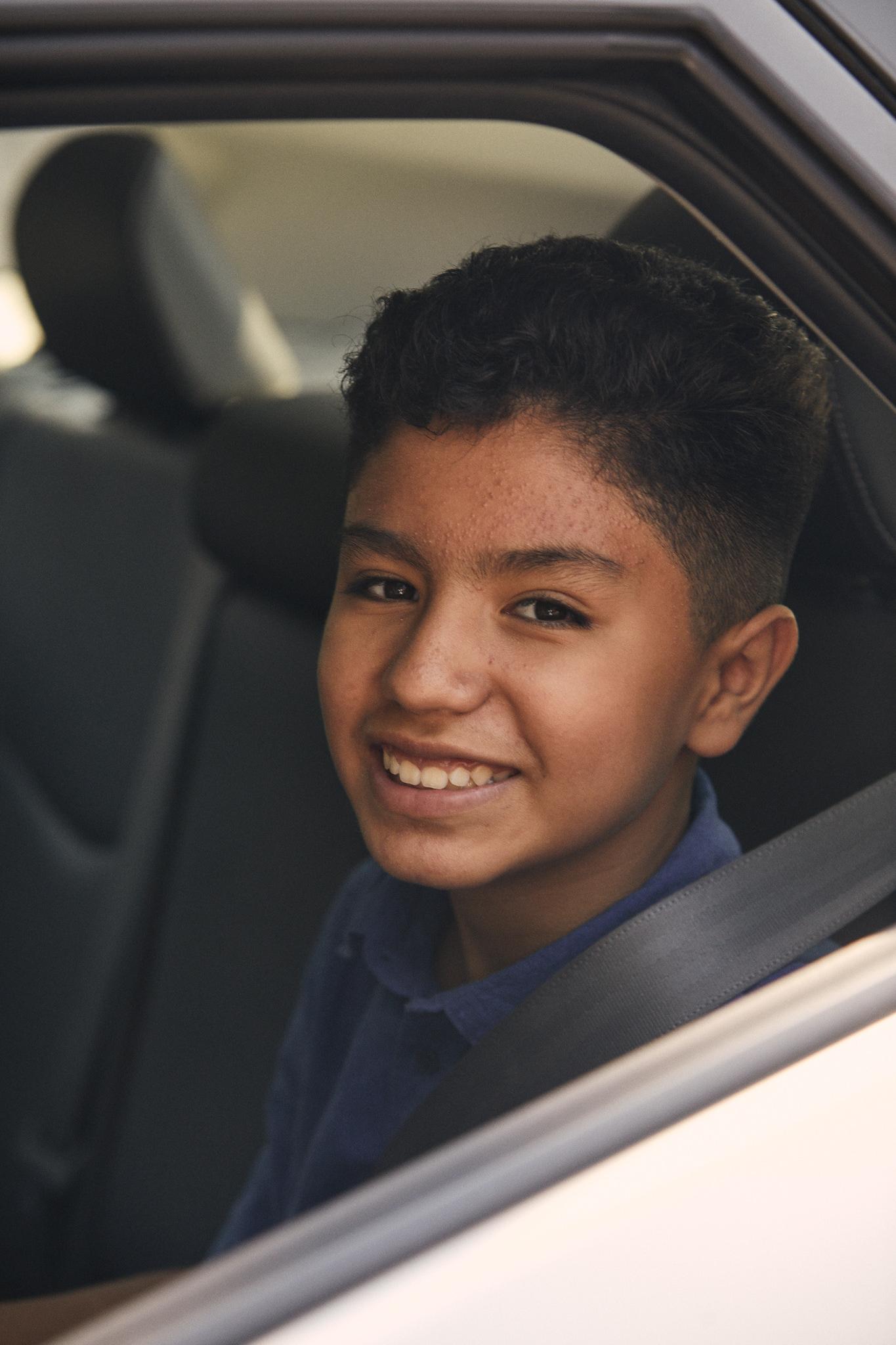[Checklist] Evaluating alternative transportation solutions
If you’re just looking, seriously considering, or comparing partners to help with your alternative transportation needs, there are key product and service features that make all the difference. They can make your life and work easier, keep drivers happier, and ensure your non-routine riders have a safe, pleasant ride to school.
We’ve created a simple checklist to follow so you can find the right match for you. The questions are below, but we’ve expanded on why each consideration is important and the details you should look for. We also share the ways in which we meet these requirements to give you a tangible idea of how a solution might meet these challenges.
✅ Checklist ✅
Alternative transportation solution considerations
Does the alternative transportation solution ensure drivers have experience in childcare? ☑
Does the company offer trauma-informed care training and other training resources for drivers?
How are they equipped for riders with special needs?
What safety measures are built into the product and processes?
Do they allow you to track the ride?
Can you contact a support team directly to handle an issue? Can a child’s family contact a support team directly?
Are they flexible enough to meet your needs? (Do they have a flexible supply of drivers? Are you charged if you don’t meet a minimum of rides?)
What extra fees do they charge for wait times, cancellations, etc.?
Get the non-routine transportation solution checklist
Now, let’s go into more detail about why each of these questions is important.
1. Does the alternative transportation solution ensure drivers have experience in childcare?
We feel childcare experience is one of the most important factors to have in a potential transportation partner. Trained caregivers will be a calm and empathetic presence for kids, and have a better sense of what’s effective when approaching a child.
Riders from vulnerable populations may be in need of a little extra care on a trip, and a driver with experience in childcare will be used to providing the level of attentiveness they need.
What we do: At HopSkipDrive, CareDrivers must have five years of caregiving experience to access the app; this ensures they’re comfortable working with kids.
Many CareDrivers are parents themselves, or have worked with kids as teachers, nannies, and classroom aides. This gives them a sense of what is most effective when working with children, enabling them to handle even difficult situations with empathy and kindness.
We also provide special resources and training for CareDrivers.
2. Does the company offer trauma-informed care and other training resources?
Many children have experienced trauma in their past. We feel it’s important to provide an experience that is safe for every child to have their needs met physically, but also emotionally. Any partner you choose to provide transportation for vulnerable populations should be knowledgeable about trauma-informed care and its value.
Trauma informed care advises caregivers to approach those in their care with the assumption that they are likely to have a history of trauma. Trauma-informed care helps kids feel safe and comfortable because those with the training know how to recognize and respond appropriately to trauma signs and symptoms, and they know how to not re-traumatize a child who exhibits these signs. For example, even something as simple as asking about the parents of a child in foster care can be upsetting for the child.
Drivers should be able to explain and employ best practices for driving students from populations such as McKinney-Vento, youth in foster care, and students with special needs. They should also fully understand their role as a mandated reporter.
What we do: During the HopSkipDrive orientation and in ongoing training materials, we share various techniques CareDrivers to use, so they behave in ways that encourage healing and do not create additional trauma.
With trauma-informed care, the CareDrivers know to keep to topics like weather, music, or other things unlikely to have bad associations for the Rider.
After the trauma-informed care training they receive, CareDrivers can explain the policy and put the best practices we share in our CareDriver training and resources to into action.
The training also helps CareDrivers provide a consistent experience for every rider.
Georgina used HopSkipDrive to get to school early every day from her foster home.
“Foster Youth, our lives are everywhere,” Georgina said. “There’s so much change all the time and there isn’t much stability … All [HopSkipDrive] drivers are super friendly and it’s always been a really positive experience. I was able to gain more stability, make more friends, be the old me and be happy, smiling and excited to go to school.”
3. How are they equipped for riders with special needs?
If you’re considering a partner to assist with special needs transportation, ensure they’re fully prepared to meet every Rider’s needs. The trip to school is part of the day, and an unsettling experience on the way may mean the Rider does not arrive ready to learn. This can take away valuable classroom time in order to calm them down, which impacts the Rider and may impact other students too.
Special needs is a broad term, and the types of special needs drivers may encounter varies greatly. There are many forms from emotional disturbances, cognitive differences, and physical disabilities.
It’s important that drivers understand how important consistency is for children with special needs, such as being on time and driving smoothly. When choosing a partner, it’s important to ensure they provide additional training and resources about special needs riders.
For riders with physical issues, it’s also key to determine which drivers can accommodate them.
What we do: HopSkipDrive does this by checking with CareDrivers during the onboarding process and also providing additional training.
For example, when they’re onboarded, HopSkipDrive asks CareDrivers if their vehicle can accommodate a wheelchair. Riders who use a collapsible wheelchair or other device that can fit in a trunk can have rides claimed by drivers with standard four-door sedans.
HopSkipDrive works to create a consistent experience for each rider, even though they may not get the same driver. We do see the value in having driver consistency for students with special needs, and encourage clients to use the recurring ride feature. When this feature is used to schedule repeat trips for special needs students, one CareDriver may claim all or most of the trips.
Generally, students will have one to three different CareDrivers during a 90-day period, which allows them to get comfortable with a small group of trusted adults.
4. What safety measures are built into the product and processes?
Any children’s transportation company needs to have a very stringent set of safety procedures, for the protection of children and drivers alike. This is an important aspect to look for in any potential partner, but especially for kids who may not be able to advocate for themselves.
How does your potential partner vet drivers? What are their processes when choosing drivers?
Do they have safe driving monitoring built into their app? Of course, you want to make sure drivers aren’t engaging in any of the six riskiest driving behaviors, but it’s also crucial so kids aren’t scared in the car. How do they check for device use while driving or unsafe driving behavior? Do they offer feedback to drivers to improve their driving?
How does the company check for safe DMV records; do they continually check DMV and criminal records?
Is there a team monitoring rides live, who can help with any issues that may arise?
What we do: HopSkipDrive is singularly focused on the safety of all users, which includes both the Rider and the CareDriver. We have a team working with you to watch and monitor each ride, with multiple points of contact throughout. Ride Organizers receive text messages when the driver is on the way, arrives, meets with the child, departs, and when the child is dropped off.
We also have safety technology that alerts staff to various issues with rides, such as a late pickup. We employ third-party technology to record any risky driving events like speeding. This feedback is shared with drivers on a weekly basis for iterative improvement.
5. Do they allow you to track the ride? Can you contact a support team directly to handle an issue?
Children can’t always be expected to know geographic directions, which is why having visibility into the route of your trip is important. Any transportation company should be able to provide some insight into your trip’s progress, and allow you to easily reach the support team if you’re concerned.
What we do: To keep riders safe, every HopSkipDrive ride is live-monitored by our Safe Ride Support team. They’re alerted to any anomalies like a ride going off route or taking too long and proactively address the situation. This team will immediately communicate directly with the driver and you will be looped into any situation so that you always maintain full visibility.
You can track rides in progress using the HopSkipDrive app, and caregivers and parents will receive text messages alerting them to the progress of the ride. They can call support as well.
HopSkipDrive also monitors CareDrivers for risky driving behaviors like cell phone use and speeding. CareDrivers are provided with a safety score on a weekly basis, and those with consistently low scores may be removed from the platform. This monitoring helps with the consistent experience component as well, since CareDrivers are sure to drive smoothly and safely throughout the ride.
6. Are they flexible enough to meet your needs? Do they have an available supply of drivers? How quickly can they start rides for children?
Transportation personnel are busy, especially if you’re working with populations that change overnight. Directives and needs for these populations can change rapidly, and providing an immediate solution is key to ensuring academic progress isn’t lost.
If you’re looking for a partner to provide service to foster youth, McKinney-Vento students, and students on IEPs, you need flexibility and a rapid response.
Flexibility is key to fleet optimization, because as your needs change so does the cost. And rapid response is crucial to get kids back in the classroom asap, regardless of their current situation.
What we do: Since CareDrivers use their own vehicles, HopSkipDrive’s model is able to manage fluctuations in demand with ease. There’s no need to purchase a bus for a few students when you can have a CareDriver providing transportation the following day. Whether your needs increase or decrease, HopSkipDrive is able to provide the solution that fits.
We’re also able to add new students and book new trips with only eight hours notice.
Want to know more about how we partner with districts and counties to provide transportation for foster youth and kids with special needs?


